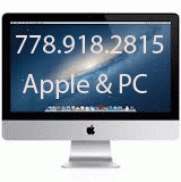

- HOW TO RESET MAC TO FACTORY SETTINGS 2016 SOFTWARE
- HOW TO RESET MAC TO FACTORY SETTINGS 2016 PASSWORD
HOW TO RESET MAC TO FACTORY SETTINGS 2016 SOFTWARE
However, ePublishing software won't recognise the new heading name and for some reason it won't change back no matter what I do. Next, you must select a user with admin rights and enter your account credentials before you can access the computer’s boot options. I inadvertently changed HEADING 1 to a different default and renamed it HEADING 1a and also amended the settings under it (font size etc). If your computer crashes and the normal recovery media don’t work, try the Control + Command + Eject (or power button) keyboard shortcut. Release the keys and allow the Mac to boot, then open Recovery. From here, hold down Command + R until the Apple logo appears. If your Mac has an Intel processor and doesn’t have a T2 chip, restart the computer. Select Options to enter the recovery screen. Keep the name 'Macintosh HD' and set the format to 'APFS' or 'Mac. In the dialogue box, you need to rename the drive and format. Confirm that you want to erase all media, settings, and files.
HOW TO RESET MAC TO FACTORY SETTINGS 2016 PASSWORD
Enter your password and proceed with erasing data. Restoring your Mac to its factory settings will erase all your data from the hard drive as well as your preferences and customized settings. In System Preferences, click on the main menu in the menu bar and choose Erase All Content and Settings. If you have a Mac M1 or an Intel-powered Mac with a T2 chip, turn off the computer completely and hold the power button until Loading startup options appears on the screen. Choose 'Macintosh HD' on the left side of the screen. Instead, Click the Apple icon > System Preferences. Do so when the gray screen appears during the boot process.Step 3, Select a Wi-Fi network.

How you do this depends on the chip inside the computer. Click the Apple icon on the top-left corner of the screen and select 'Restart.'Step 2, Press and hold Command + R. This time, an easy 4-step formula to help you do that: 1. Click the Continue option in Disk Utility and then select. However, ePublishing software wont recognise the new heading name and for some reason it wont change back no matter what I do. Once your Mac boots into Recovery mode, open the Disk Utility. I inadvertently changed HEADING 1 to a different default and renamed it HEADING 1a and also amended the settings under it (font size etc). Power on your Macbook, Macbook Pro, Mac Mini or other OS X computer. Hold down the Command and the R on your keyboard at the same time. iMessage sign out: Before you restore MacBook to factory settings, remember to sign out of iMessage. Steps to Reset Mac to Factory Settings: Turn off your Mac completely. If you're running macOS Mojave or earlier, go to Apple menu > System Preferences, choose iCloud. To access the options to erase data and reset the operating system, you need to enter macOS Recovery. Select Apple ID, then select Overview in the sidebar. Then turn it on and immediately press and hold these four keys together: Option, Command, P, and R. Another option for resetting a Mac is Disk Utility, which is available to all users. Step 3 PRAM/NVRAM Reset Shut down your Mac.


 0 kommentar(er)
0 kommentar(er)
